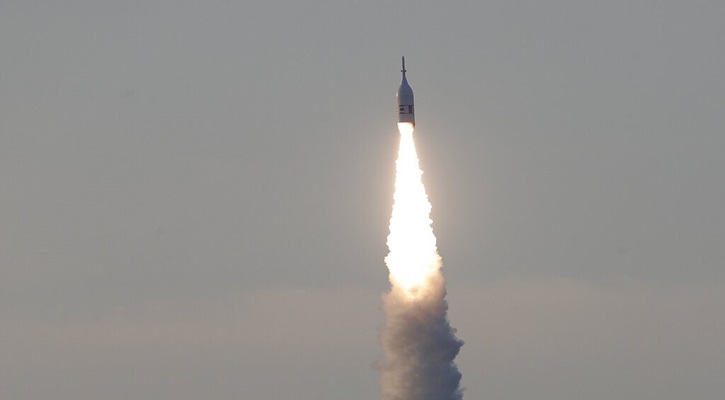Rolle im Portfolio
The iShares FTSE Macquarie Global Infrastructure 100 UCITS ETF provides exposure to the 100 largest stocks from developed and advanced emerging countries contained within the broader Macquarie Global Infrastructure index.
Despite being advertised as a benchmark for the broad infrastructure sector, global utility providers make up close to four fifths of the index, with oil & gas pipelines and industrial transportation rounding out the remainder.
Utilities offer a direct investment into a regional economy’s growth, as it is literally impossible to export these essential services. Under the utility umbrella, the index contains both regulated utility providers and merchant power generators. Regulated utilities have historically provided stable dividends and returns. Merchant power generators, on the other hand, tend to have a wider variance of returns due to commodity price fluctuations.
At the time of this writing, the reference index has exhibited a five-year correlation to the MSCI World (~80%) and the STOXX Europe 600 (~80%), implying limited diversification benefits when added to core equity holdings.
Investors are often attracted to the utilities sector because it has historically produced strong, stable cash flows and dividends. As of this writing, this ETF has a current dividend yield equal to roughly 1 percent higher than the current dividend yield for the MSCI World index.
Fundamentale Analyse
The utilities sector, which represents around 80% of the reference index, has lagged the broader major equity markets over the course of the global economic recovery. Over the last five years the FTSE Macquarie Global Infrastructure 100 index has returned an annualised 2%, which is significantly less than either the STOXX Europe 600 (5%) or the S&P 500 (14%). This relative underperformance is partially explained by the counter-cyclical traits exhibited by utilities stocks.
Utilities firms supply indispensable services and goods, such as water, natural gas or electricity and often operate within heavily regulated and naturally monopolistic environments.
The prohibitively high capital investment costs associated with building power or water plants and related infrastructure act as a natural barrier to entry within the utilities sector. These capital requirements mean that it is often inefficient to have more than one electricity grid, or gas pipeline serving a single catchment area. For these reasons the utility market is often naturally suited to a monopoly or oligopoly.
The services that utilities provide are considered necessary for the most basic levels of human consumption and provide the basic inputs for a well-functioning economy. For this reason most governments retain extensive control over the sector through the use of regulation. Even in the US, where the market has seen significant deregulation, transmission and distribution operations remain tightly regulated. In an effort to trade off the requirements of consumers (low and stable prices) and shareholders (maximum profit) of the monopolistic utilities, governments often allow them to make a pre-defined, reasonable profit. This arrangement has historically brought investors a steady cash income, distributed in the form of dividends.
The near-universal requirement for utility goods and services within modern society mean that the demand will be less sensitive to fluctuations in the wider economy when compared with other sectors. As a result, utilities stocks tend to outperform other equity sectors in times of economic downturn, but underperform in periods of economic growth.
Since utility projects are capital-intensive, utility companies are particularly sensitive to changes in interest rates and any limitations on access to credit and equity markets. For example, in the wake of the credit crisis, in an attempt to stabilise their balance sheets, banks reduced lending to capital intensive, long-term projects, severely curtailing international deal flow. Due to loose monetary policy globally, borrowing costs have hovered near historical lows for some time, but won’t remain at that level indefinitely. When rates do rise again, capital-intensive projects may be shelved, or if necessary, financed in the hope of re-negotiating borrowing-terms at a later date.
Looking forwards, investors in this sector should also consider the potential risks arising from regulatory changes, given the huge governmental influence on the utility markets.
Indexkonstruktion
The FTSE Macquarie Global Infrastructure 100 index is a free-float market capitalisation weighted index offering exposure to the 100 largest companies from the broader FTSE Macquarie Global Infrastructure index. Index constituents are chosen from developed and advanced emerging markets and fall into four specific industry categories as defined by the Industry Classification Benchmark (ICB): Utilities (~80%), Oil & Gas pipelines (~15%), Industrials(~4%). These firms must be engaged in management, ownership, or the operation of infrastructure and utility assets to be eligible for inclusion. Moreover, the constituents must pass a liquidity screen; turning over at least 0.035% of their shares on their median daily trade per month in ten of the previous twelve months. The top 10 constituents comprise approximately 30% of the index’s value with the largest component (Kinder Morgan Inc) having a ~5% weighting. This indicates that the index is rather broadly diversified across its entire roster of constituents. Geographically speaking, the index has a heavy US bias (50% of the index’s value), followed by the UK (10%) and Canada (8%). The index is reviewed semi-annually in June and December.
Fondskonstruktion
The iShares Global Infrastructure UCITS ETF uses full physical replication to track the FTSE Macquarie Global Infrastructure 100 total return index. The fund aims to track the performance of the reference index by owning all the constituent shares in the same weights as those stipulated by the index. To help further improve tracking performance, the fund engages in securities lending. In the 12 months through the end of September 2014 the programme saw an average of 11.5% of assets under management loaned out across the year and added 6 basis points of net return to the fund. BlackRock, iShares’ parent company and lending agent, keeps 37.5% of gross securities lending revenue for itself, out of which amount it will pay the associated costs of the activity, and passes 62.5% of the revenue to the fund. BlackRock has a 50% cap on the amount of assets that its iShares funds can lend out. To protect the fund from a borrower’s default, BlackRock takes collateral greater than the loan value. Collateral levels vary from 102.5% to 112% of the value of the securities on loan, depending on the assets provided by the borrower as collateral. This fund uses futures for cash equitisation purposes, which helps to reduce tracking error. This accumulating ETF reinvests all dividends paid out by the underlying stocks directly into the fund.
Gebühren
The iShares Global Infrastructure UCITS ETF levies a total expense ratio (TER) of 0.65%, which is slightly higher than other ETFs tracking global infrastructure indices. It should be remembered that there are additional, investor-specific costs associated with trading the ETF, such as bid/offer spreads and brokerage commissions, which should be factored into an investment decision. There are also rebalancing costs whenever the index changes composition.
Alternativen
At the time of this writing, the second most popular ETF, as measured by assets under management (AUM), behind the iShares Global Infrastructure UCITS ETF is the db X-trackers S&P Global Infrastructure UCITS ETF.
The db fund offers more diversified exposure to the global infrastructure industry. This is primarily achieved through the reference index's modified cap weighted weighting scheme that reduces single stock concentration and balances sector and geographic exposure. This ETF synthetically replicates its reference index and charges a TER of 0.60%.
iShares also offers exposure to emerging market infrastructure equities through the Emerging Market Infrastructure UCITS ETF (TER of 0.74%).








.jpg)








